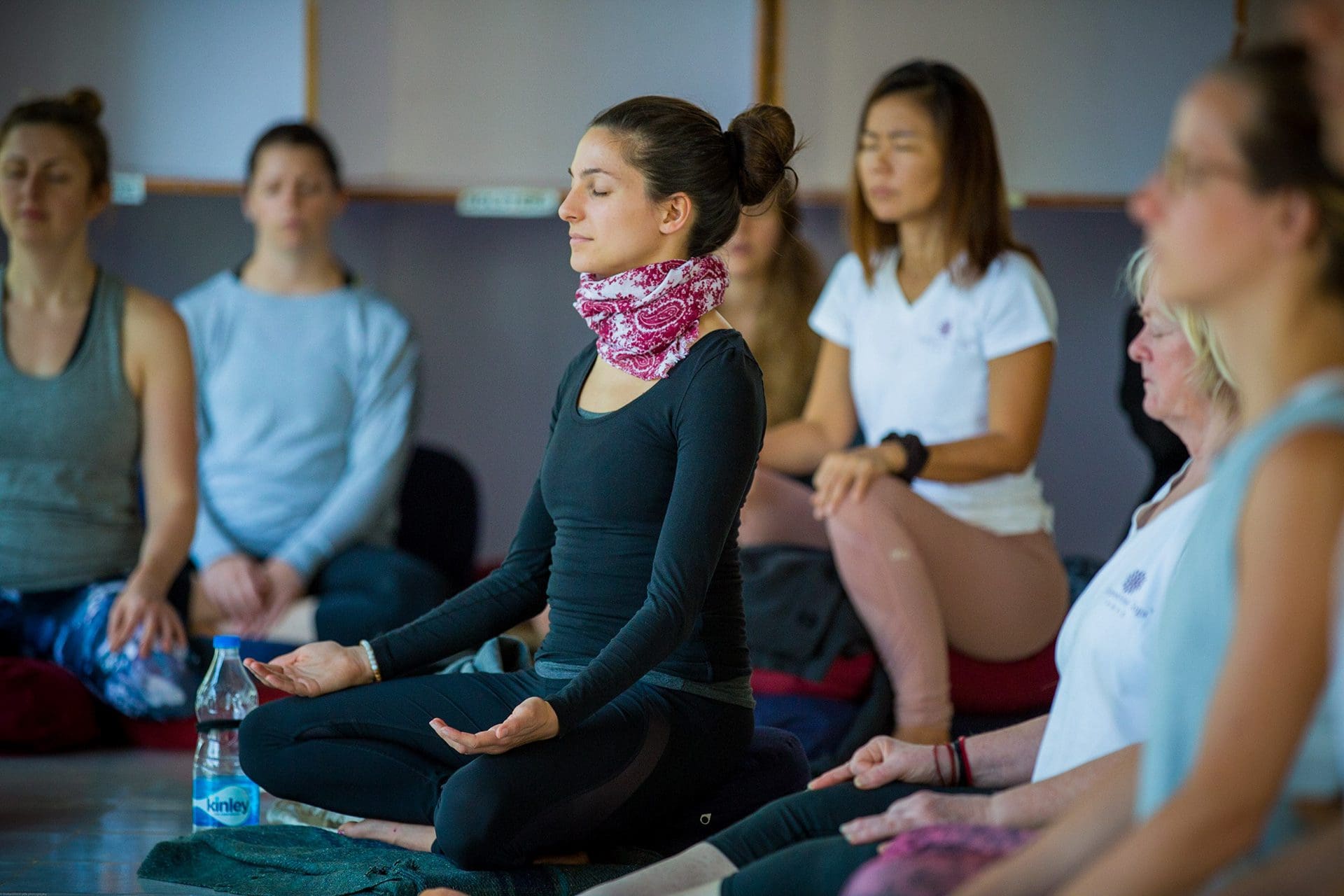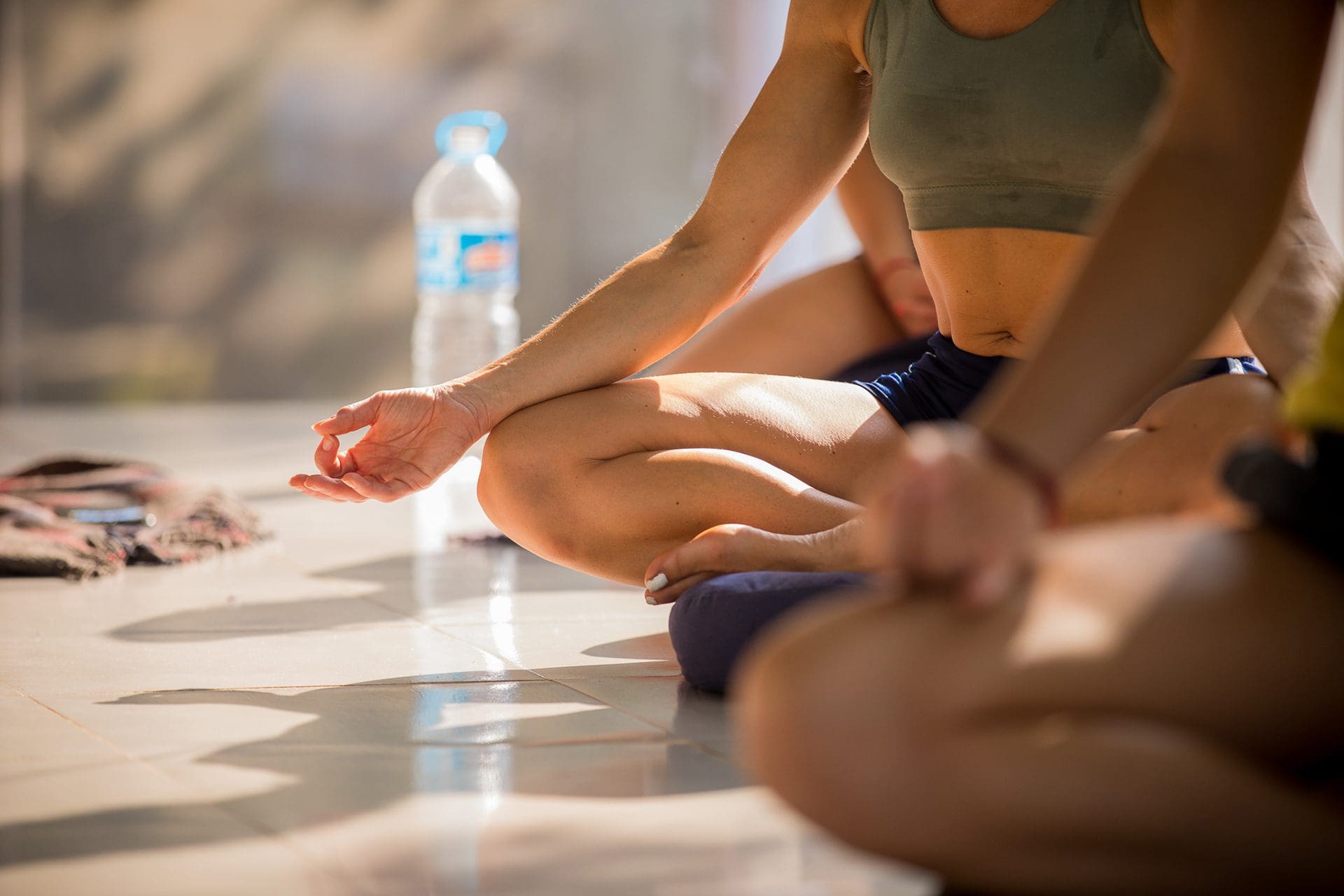Importance of Integrating Asanas, Pranayama and Meditation in your Yoga Practice
Yoga is a practice for the mind, body and soul. It is a spiritual practice and a lifestyle that promotes good physical, mental and emotional health. When we look at the Patanjali Yoga Sutras or Hatha Yoga Pradipika or Bhagwad Gita or any other ancient yogic text, we find how there are different components that come together to promote our well-being. In the Eight Limbs of Yoga, we learn that progressively integrating the Yamas, Niyamas, Asana and Pranayama lead to Pratyahara, Dharana, Dhyana and finally Samadhi. In the Hatha Yoga Pradipika, Swami Swatmarama beautifully lays out the importance of asanas to steady the body and breathwork to control the mind. The mind and body are, thus, strongly inter-connected.
Why are asana, pranayama and meditation important in today’s modern times? At the beginning of any yoga teacher training, it is reinforced how integrating asana, pranayama and meditation is the foundation and groundwork for self-awareness, to control the mind and to live a life of balance. Many of us live sedentary lifestyles due to work pressure and external responsibilities, and for some it is an excess of physical activity. This takes a toll on health, resulting in back pain, tight or weak muscles, stress, anxiety, heart issues and PCOD/PCOS and other women’s health concerns. A holistic practice of asana, pranayama and meditation collectively works on balancing the imbalances and strengthening the body and mind.

The practice of asanas (whether done in a flow like Vinyasa yoga, or one asana at a time such as in Hatha yoga and Ashtanga yoga) stretches out tightness and stiffness in the body, corrects our posture (leaning over a laptop for hours affects postures greatly), relieves pain and reduces inflammation, boosts blood circulation to every corner of the body, strengthens and nourishes the muscles and connective tissue, balances hormones responsible for stress, diabetes, thyroid, PCOD/PCOS, etc.
Moreover, asanas practiced with breath awareness are far more impactful. It induces a greater level of concentration and presence of mind. Awareness of sensations in the body is heightened, preventing injuries, improving oxygen supply to targeted regions, eliminating imbalances, enhancing postural awareness, among others. There is awareness of moving the body as a whole, rather than just a part of it. Breath awareness allows you to navigate higher levels of consciousness, which is a goal of yoga practice. Breath is, after all, the most essential necessity for our existence.
The Hatha Yoga Pradipika says that pranayama should be practiced everyday to remove impurities, while Patanjali’s Yoga Sutras say that pranayama is a means to control the mind and ultimately reach Samadhi. B.K.S. Iyengar said, “the mind controls the body, but the breath controls the mind.” In Ashtanga’s Eight Limb approach, pranayama is the fourth limb. After practicing asanas, spending time in breathwork where you consciously regulate the breath, enables you to calm the mind, induce a certain level of peace and tranquility, gradually resulting in the fifth limb, Pratyahara (withdrawal of the senses).
By mastering the breath, you can master the mind, reducing fluctuations and imbalances. A certain control develops that empowers you to consciously remove distractions or influences from the external world, and impurities that are already in the mind. Over time, stillness and peace of mind is attainable, helping you achieve a goal of yoga, Sattva (purity). With peace of mind, less stress and tension is withheld in the body too, reducing the harmful effects of unhealthy lifestyles, excess workload, stress and worries.
Breathwork works strongly on a subtle level, encouraging the flow of prana and cultivating a greater sense of calm and peace. The practice of Ujjayi or Victorious breath, either on its own or while doing asanas, is immensely impactful in activating the nervous system, a major player in inducing relaxation. By listening to the soft ocean-like sound during Ujjayi, cortisol levels are reduced, taking away stress and tension. Combined with asanas, you’ll see double the effect of relief in the targeted region from Ujjayi breathing. When the nervous system is balanced and the parasympathetic nervous system is activated, your body and mind will naturally feel more relaxed and calmer. By integrating pranayama, you’ll feel these effects on a physical, mental and subtle level, and you will gradually begin to control the mind and withdraw the senses.

As you begin to withdraw from external influences, you reach the fifth stage, Pratyahara. It is, in a certain sense, the beginning of meditation. The inward journey begins here. The ability to consciously change one’s thought patterns, remove negative thoughts and imbalances, and work towards peace and calmness gets stronger from the stage of Pratyahara. The senses are controlled and rested, preparing us for meditation. Dharana, meaning concentration, is the one-pointed focus on a particular object. When this gets completely absorbed and focus is greater, it is Dhyana, the main stage of meditation. This is the stage when meditation becomes effortless.
A good yoga teacher will always tell you meditation cannot happen in one session or with sporadic practice. Only through regular practice can one begin to control the mind, develop the required concentration and focus. When you reach this space, you’ll feel free, balanced and calmer. The feeling of more space being created in the mind and body with abundance of energy flowing freely will bring renewed joy and a positive outlook. Presence of mind in day-to-day activities with better control over reactions and thoughts will create happier days. Little will disrupt the balance of mind and challenges will seem like small niggles in one’s path to liberation.
None of this can be achieved without a holistic practice that integrates asana, pranayama and meditation in daily life. Asanas will build strength and steadiness in the body required to sit still in meditation. It will release blockages and encourage the flow of energy. It will help you bring awareness to different body parts, soothing the nervous system. Pranayama is the means to control the breath and therefore, the mind. It removes toxins and unlocks blockages in the nadis (energy channels) to allow prana (life force) to flow freely. It keeps the mind focused on the breath. Meditation will unleash the best version of you, promising to benefit your life in more ways than one.
Together, these practices cultivate a positive and fruitful path towards a better life where stress, worries and the pressures of the external world are nothing but mere speed bumps in the road. With this new and improved you, where mindfulness forms the basis of your approach to everything, you’ll find your mind being tied down by very little. You’ll actively let go and choose not to let those things, that do not bring out the best in you, find no place in your heart and mind.
It is a progressive journey that unfolds with the body first being steady, strong and relaxed, then the breath doing its part on a subtle level and then the mind coming to a point of focus. With practice and progress, peace and contentment become the true nature of your being.
YOGA ALLIANCE REGISTERED YOGA TEACHER TRAINING COURSES

Sampoorna Yoga Teacher Training School has been a registered international yoga school with Yoga Alliance, holding RYS-200, RYS-300, RYS-500, and YACEP designations since 2009. Its online and in-person Yoga Teacher Training Courses and Certifications are recognized and accepted worldwide, enabling all graduates to teach globally. Upon course completion, participants receive a 200-Hour, 300-Hour, or 50-Hour Yoga Teacher Training Certification, allowing registration as RYTs (Registered Yoga Teachers) with Yoga Alliance. Our Yoga Teacher Training Certificate Courses empower you to teach legally in any country, whether you choose to register with Yoga Alliance registration or not.

